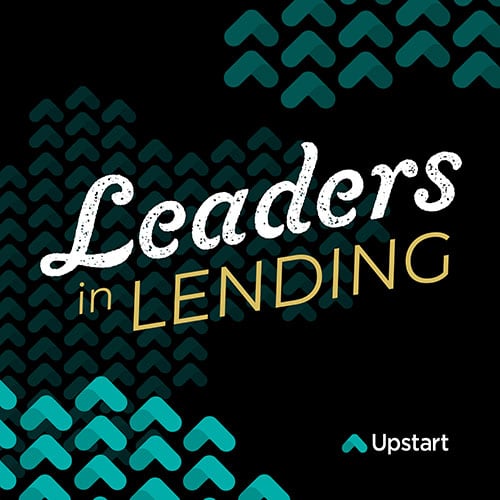Leaders in Lending | Ep. 62
The Paradigm Shift in Payments: Modernization in Card Issuing and Processing
Randy Kern, Chief Technology Officer at Marqeta, discusses how they are disrupting the payments industry with transaction-based decisioning and buy-now-pay-later, and how lenders can work to optimize both internal processes as well as the borrower experience.


GUEST SPEAKER
Randy Kern
Randy brings decades of software engineering experience to Marqeta. His responsibilities include scaling Marqeta's global engineering team and driving technological advancements across the company. He was previously at Salesforce for seven years, where he held the Chief Customer Technology Officer and Executive Vice President of Infrastructure roles. While at Salesforce, Randy was responsible for building out a unified tech infrastructure to support the company’s industry-leading enterprise cloud product. Before that, he was at Microsoft, where he led development for its Azure Compute team and worked on many of their most popular products, including Bing.

ABOUT
Marqeta
Marqeta provides an open API platform that helps companies create, issue and deploy virtual and physical payment cards. The company partners with traditional financial institutions, large tech players and fintechs to provide card-issuing and payment processing solutions.
Key Topics Covered
- Building more visibility between borrowers and their finances
- Moving the credit decision to the transaction level
- The growing focus on risk products and capabilities
- The evolution of BNPL
- Fighting fraud while maintaining a best-in-class borrower experience

“The idea with modern card issuing and processing is to produce a composable, modular world where you can bring your special idea to that overall ecosystem, and leverage the payment rails for a really disruptive, new experience for your customers."

“By making half the business more efficient, in this case, more focused on the lenders on managing risk on their exposure, you actually make a better consumer experience, too.”

“In terms of risk control, and how you make the focus less about the account, it’s less about this grandiose, static thing. Now it's real time, it's this specific person, with this specific merchant making this specific transaction at a particular point in time.”
EPISODE RECAP & SUMMARY
How can lenders create a differentiated transaction experience for their borrowers with such a technically simple integration?
Randy Kern, Chief Technology Officer at Marqeta, discusses how they are disrupting the payments industry with transaction-based decisioning and buy-now-pay-later, and how lenders can work to optimize both internal processes as well as the borrower experience. Join us as we discuss:
- Building more visibility between borrowers and their finances
- Moving the credit decision to the transaction level
- The growing focus on risk products and capabilities
- The evolution of BNPL
- Fighting fraud while maintaining a best-in-class borrower experience
Innovation and disruption in the lending ecosystem
While technologies constantly emerge, shifting the world of finance further into the future, it doesn’t always take a novel invention to lead to progress.
In the case of emerging buy now, pay later systems, disruption has offered great leaps and bounds for consumers and financial institutions.
Rather than creating new technologies to replace preceding financial systems, leaders in lending and banking are sparking revolutionary changes in clients' experiences through disruptions built upon existing structures. With an explosion in online banking and shopping, these small disruptions come together to completely transform financial and lending ecosystems around the world.
Banking and payment systems have not always been as quickly accessible as they are today. So, while holding your bank records in the palm of your hand is a relatively novel ability, the banking and payment structures used by those systems are nothing new.
This idea of system disruption, rather than innovation or replacement, is transforming buy now, pay later options.
Modern lending and the importance of API Automation Rails
Expanding buy now, pay later options offer consumers a variety of choices when it comes to shopping. However, these loan offers require quick, accurate credit determination and approval.
Building upon existing credit determination systems, expanded buy now, pay later options utilize API Automation Rails to quickly approve or deny loans on everything from lawn mowers to holiday gifts.
Randy explains, “How do you bind the credit determination into the transaction flow? This is leading to buy now pay later.” Rather than the traditional system of removing lending from the initial transaction, leaders are incorporating disruptions and additions to current purchasing systems, allowing a more accessible and reliable borrowing experience for a greater number of consumers.
While these lending offers are similar in many ways, different institutions have taken distinctive approaches.
“A bunch of folks in this space who really provide a very, very different experience for the consumer at the point of sale… are connected in ways through that dynamic environment,” says Randy.
API Automation Rails serve as the bedrock for each of these transaction experience designs. The ways in which different leaders and institutions decide to create their customer experience by providing buy now, pay later options within their own transaction systems are entirely customizable to their clientele and goals.
Protecting consumers with an individual approach
While the landscape of lending and purchasing is changing, the emphasis on security is not.
In fact, there is often an increased concern for risk and fraud when consumers experience changes in payment and borrowing opportunities.
However, traditional lending and banking protections remain the same, as current lending offers are built on top of existing structures. Recent efforts to reduce risk are also shifting from a large-scale approach to a more individual one.
Randy discusses this new mindset around security: “In terms of risk control, and how you make the focus less about the account, it’s less about this grandiose, static thing. And now it's real-time, it's this specific person, with this specific merchant making this specific transaction at a particular point in time.”
Consumers also have greater power in monitoring and protecting their accounts. For example, with live access, borrowers are invited into the payment system and allowed to watch in real-time as they make transactions.
Therefore, while digitalizing and streamlining the customer experience of buy now, pay later options comes with new concerns, it also is accompanied by the knowledge, experience, and existing security measures established by financial institutions for traditional lending.
How building the new upon the old is changing customer experience
Utilizing existing payment systems and API automation rails has ultimately granted greater borrowing power to clients.
With the ability to quickly and easily assess credit and opt-in to buy now, pay later options, customers can experience a smooth purchasing experience, free from the cumbersome tasks of extended credit checks and trips to the bank.
In addition, utilizing existing systems allows greater power and flexibility to businesses that use these options. With a say-so in the design of their buy now, pay later options, organizations have more opportunities to shape their customer experience.
New buy now, pay later options are not innovations in modern lending. However, they are exciting disruptions that utilize the strengths and protections of traditional lending while creating a smoother and more enjoyable customer experience.
These expanded options are not the end. With new disruptions in technology emerging every day, the lending ecosystem will continue to shift to better improve customer experience over time.





